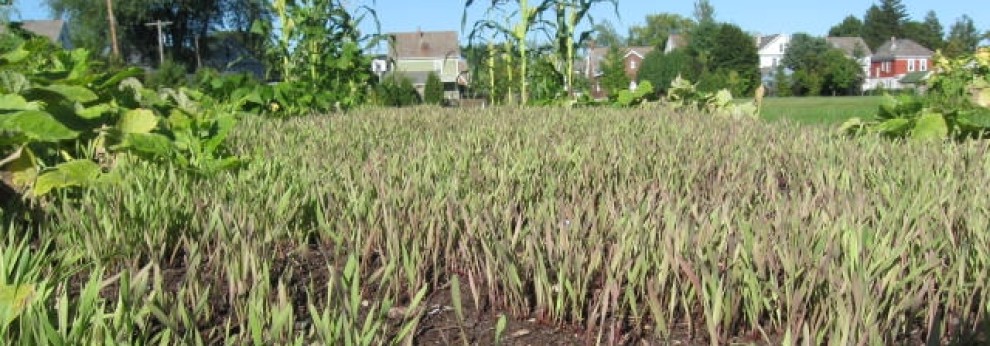 What exactly drives us to propose building an outdoor classroom at Myers Middle School? Why would we stay up nights thinking about taking on more than caring for vegetable garden beds? The garden beds already saddle us with those time-consuming fundraising initiatives, like soliciting Boxtops for Education, and those time-consuming chores in the garden, like weeding and watering. Why isn’t a garden enough? And why in the world would we harbor thoughts about taking lessons learned tackling an ambitious project at one school to other schools around town?
What exactly drives us to propose building an outdoor classroom at Myers Middle School? Why would we stay up nights thinking about taking on more than caring for vegetable garden beds? The garden beds already saddle us with those time-consuming fundraising initiatives, like soliciting Boxtops for Education, and those time-consuming chores in the garden, like weeding and watering. Why isn’t a garden enough? And why in the world would we harbor thoughts about taking lessons learned tackling an ambitious project at one school to other schools around town?
When we get kids (and adults, too) outside into a more natural and less structured setting than a typical school classroom, we create teaching and learning opportunities that are largely unavailable in a typical classroom. One big reason for this is that the outdoors and nature and greenery support health, which in turn supports learning.
Consider this: University of Illinois researchers have found that exposure to nature can lessen symptoms of attention deficit challenges. They have identified a correlation between enhanced greenery around otherwise dreary housing projects and impulse control among teenage girls living in them.
More than that, academic research has connected nature with good health as measured in an incredible variety of ways. Cornell psychology professors Nancy M. Wells and Gary W. Evans captured the range in a 2003 paper Nearby Nature: A Buffer of Life Stress Among Rural Children. They wrote: “Time spent in contact with the natural environment has been associated with better psychological well-being (R. Kaplan, 1973), superior cognitive functioning (Cimprich, 1990; Hartig, Mang, & Evans, 1991; Kuo, 2001; Tennessen & Cimprich, 1995), fewer physical ailments (E. O. Moore, 1981; West, 1986), and speedier recovery from illness (Ulrich, 1984; Verderber, 1986; Verderber & Reuman, 1987).”
We might put many of these healthy outcomes under the general heading of equanimity and then suggest that they might contribute over time to educational attainment. We might go out on a limb and say that many of the popular prescriptions for failing students and failing schools – longer school days, longer school years, school uniforms, laptops for everyone and different approaches to discipline – are unlikely to make as great a difference as supporting balance and composure and hope for a better future of kids for whom things are not working well.
And we would argue that exposure to the outdoors, whether that means parading past garden beds en route to sitting and writing or whether it involves collecting soil samples and testing for macronutrients, is among the most promising paths to supporting composure and hope for a better future and the thus better preparing students for the great things that schooling offers.
—Bill Stoneman




One response to “Why build outdoor classroom at Albany school?”